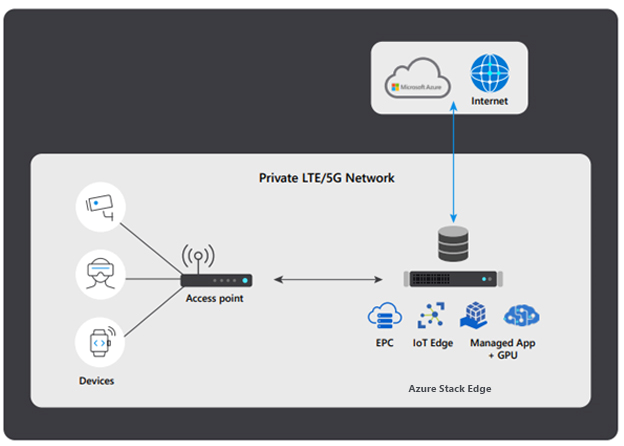Azure Updates: 5G; HPE Spaceborne Computer-2; Stream Analytics; Blob Storage
Sanjay Mewada, Microsoft's Worldwide Marketing Lead, profiled the company's growing 5G capabilities. Microsoft is preparing for a new future of Industry 4.0 apps, smart cities, and private operator involvement. With this in-mind, it launched Azure private multi-access edge computing (MEC), an effort to help partners deliver edge computing, networking, and private cell service. Private mobile networks commonly encompass managed connectivity and managed services, together with self-management options. This can be combined with Stack Edge for low latency, Network Function Manager for cloud orchestration, and Affirmed 5G Mobile Core for 5G core network functions.

Gabe Monroy, VP of Azure Developer Experience, shared an unusual compute use case. Microsoft is using HPE's Spaceborne Computer-2 on the International Space Station as a way to improve on limited bandwidth between the space station and Earth, and as a showcase of edge and cloud workflows. High intensity data analysis occurs in space, with the most significant results forward to Earth. The new computer was installed in April, following up on earlier HPE installation dating back to 2017. Simulating future health diagnostics for space crews, the HPE computer did initial processing of gene sequences and then Microsoft Genomics service carried out additional analysis. Prior to the full-fledged project, Microsoft used ARM to simulate latency between the space station and the ground. Monroy wrote:
The experiment’s successful completion—and the data collected through it—is proof of how an edge-to-cloud computing workflow can be used to support high-value use cases aboard the ISS that might otherwise be impossible due to compute and bandwidth constraints. Without preprocessing the simulated output of the gene sequencer on the ISS to filter out only the gene mutations, 150 times as much data would need to be downloaded to Earth. Thus, a 200GB raw full human genome read which would require over two years to download given bandwidth and downlink window constraints, could be filtered to 1.5GB—which can be transmitted in just over an hour. Microsoft expects planned tests to further increase this ratio.
Microsoft touted its inclusion as a Leader in The Forrester Wave: Streaming Analytics for Q2 2021, based on Azure Stream Analytics. The team highlighted Stream Analytics' integration, ease of use SQL query language, advanced analytics, edge-to-cloud, and SLA.
General availability announcements include AKS support for Kubernetes 1.21, public DNS support for private AKS clusters, a new Network Insights troubleshooting experience, and AKS CSI storage driver support. Public previews include Application Insights auto-instrumentation for .NET apps on Linux. The Windows 11 public preview has come to Virtual Desktop, Mounting Azure Storage is out, Static Web Apps added support for Private Endpoints, and new VM series work with Batch. Customers will need to migrate IoT Central apps to version 3 by March 1, 2022, prep for Text-to-Speech Neural Voice changes, and be aware of the retirement of NC-series VMs August 31, 2022 and HB-series VMs on August 31, 2024.
FREE Membership Required to View Full Content:
Joining MSDynamicsWorld.com gives you free, unlimited access to news, analysis, white papers, case studies, product brochures, and more. You can also receive periodic email newsletters with the latest relevant articles and content updates.
Learn more about us here